DEER
6 species of deer can be found across the UK (outside of zoos), although only 4 in Scotland. These include the red, roe, fallow and sika deer. Of these. red and roe deer are the only species that are actually native species. The others were introduced.
RED DEER : Cervus elaphus scoticus
The red deer is probably the more impressive of native deer in Scotland. It is larger with impressive antlers and has become an icon. However it does ot occur in West Dunbartonshire.
The Scottish red deer is a subspecies of red deer, which is native to Great Britain. Like the red deer of Ireland, it migrated from continental Europe sometime in the Stone Age.
ROE DEER : Capreolus capreolus
This much smaller species is less imposing, but no less impressive. It occurs widely around our area and you may well come across some in a field. Those in the photos below were in a garden happily munching flowers. It ranges from a dusty brown through to a reddish brown in colour. References suggest that it does not have a tail, but when startled its almost white rear becomes more evident.
The males (bucks) have short antlers which they shed in October after the rutting season. It is usually considered a solitary species, though they can form loose groups in winter or perhaps a female with two young.Some groups may reach 6 or 7.
Roe deer make a sharp cough-like bark when alarmed and perhaps warning their young. During the breeding season does attract bucks with a high-pitched piping call. Bucks respond with a rasping noise during courtship. Young roe deer make a high-pitched whistle to attract their mothers when they become lost.
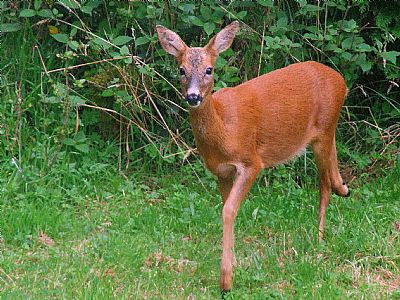
A young deer with a glistening coat in the garden near Renton.
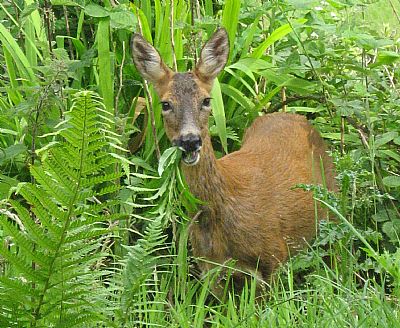
Grass, fens, nettles. Almost anything green and juicy.
You may notice variations in colouration and gloss.
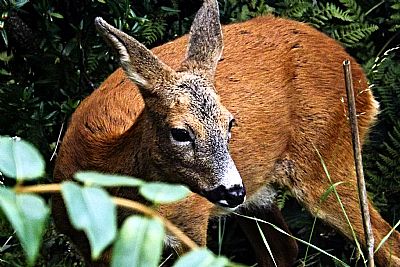
This older one is beginning to look its age. It found the garden an easy place to find food, including the rose bushes from which it happily nibbled off all the flower buds and leaves.
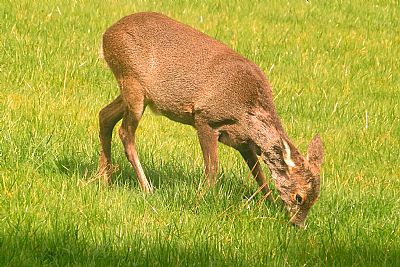
A female grazes in a field above Renton
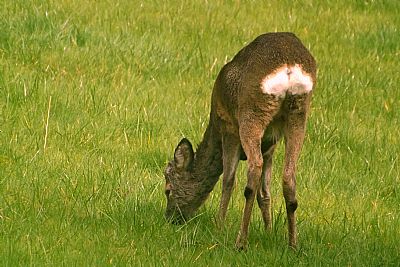
Its companion turns away from us and we see its white rump. That flash of white is often what catches the eye when we see them in low light. Perhaps it is a signal to others to follow. But perhaps it is defensive mechanism. Their brown colour camouflages them against most backgrounds, but if a predator was to notice one, the more conspicuous white flash could confuse it with say, a small bird passing by.
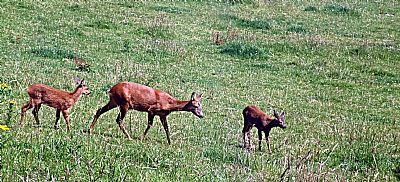
A family of deer cross a field near Renton.
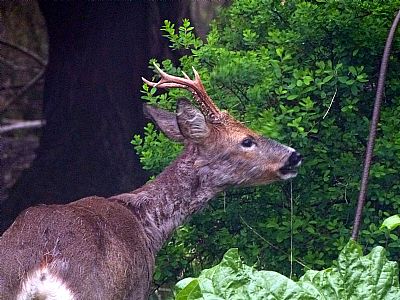
The first day of spring and this stag is sporting a great pair of antlers.
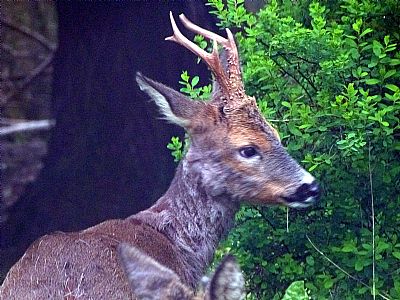
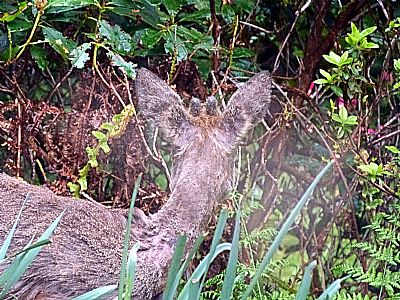
Compare the antlers in the preceding picture to those on this immature animal.
SCOTTISH WILDLIFE TRUST : https://scottishwildlifetrust.org.uk/2018/10/whats-that-deer/#:~:text=While%20there%20are%206%20species%20of%20deer%20resident,water%20deer%20introduced%20in%20the%20past%20150%20years.

